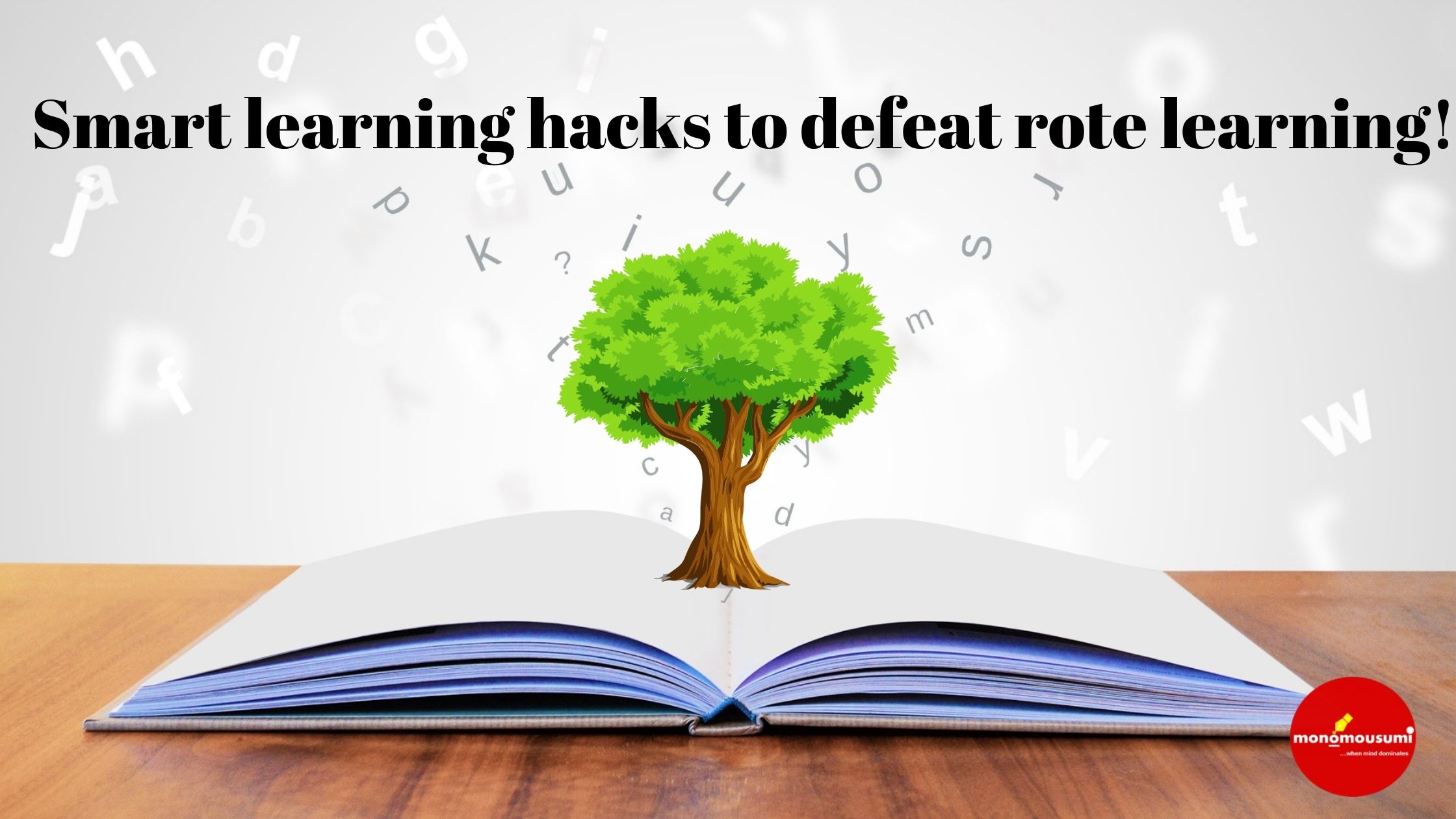
When we hear the word learning we automatically relate it to mugging up things and books but learning is beyond it, the acquisition of knowledge or skills through study, experience, or being taught is termed as learning, and the learning we do is rote learning but it’s not applicable and effective in all things or fields. We all know what to learn but how to learn is still an ambiguous question. So here are some effective smart learning techniques one can use while learning and unleash their true potential:
The Powerful Pomodoro
An average mind wanders 15-20% of the time as per researcher Jonathan Schooler. We can achieve great productivity in less time if we focus on tomatoes than hours. It may sound weird but it’s one of the techniques that help in proper time management- The pomodoro technique (In Italian language pomodoro stands for tomatoes). The Pomodoro Technique was developed by Francesco Cirillo in the 1980s He was tired of time managing between homework, assignments and studies. Feeling overwhelmed, he decided to study in period of 10 minute focus time. He was encouraged by the challenge and pomodoro technique was found. He found a tomato shaped timer so the name goes pomodro (tomato in Italian). In this technique you choose a task set a 25 minute timer and then after the timer rings you need to take 5 minute break and then again start another pomodoro. Our mind can’t concentrate for a long time so this is one of the techniques where our mind relaxes a bit during break (but ensure it’s just a 5 minute break and not overtakes another 25 minute just for a break). After completing 3-4 pomodoros one must take a 25-30 minutes break. This creates a sense of urgency in mind and helps us to do work within specified time. Break down complex projects and divide them into tasks which you can do in 1 pomodoro i.e. a 25 minute learning sprint. Everyday make list if things you need to do and allot pomodoros to them and you are ready for a productive day ahead unless your breaks are managed properly. According to a study by Chris Winfield, this technique helps in completing a 40 hour of work in 16.7 hours.
Let’s Befriend Breaks
Breaks are very important for one to study effectively. Breaks help our brain to relax and then get fully energized and with full concentration and focus, get back to work. But the problem that arises there’s no clarity what is break? How long it must be? What can we do in break? So here are the answers- Break must depend upon your study time and it’s advisable to take 5-15 minute every hour and 20-25 minute break after 2-3 hours, but ensure you stick to the break time because if we extend the break further we find that procrastination and laziness hover over us and we fall prey to them leaving important work and studies. Next is what we must do in breaks- you can take a walk, pursue your hobbies, take a small nap in long break (a cat nap), listen to songs, call a friend etc. Now what are the things you must not do during breaks as they lower the focus you have developed and make you more exhausted- Avoid scrolling social media, surfing net etc. they can make your break longer as well as make you more tired. Usually many people use 52/17 formula for breaks if not using a pomodoro. It means work for 52 minutes and take break for 17 minutes, it helps one to re-energize and be creative and productive. When one is working one shouldn’t use social media, no texting, no flowing in thought swirl but just focus on the work, similarly while taking break one must also not work and be relaxed. According to a study in Cognition journal, short breaks help keep one’s attention span on track. The psychology professor at the University of Illinois, Alejandro Lleras explains that the mind tunes out after working consistently on one project. Therefore tiny mental breaks helps to stay focused on the task!
Dreadful Distractions
The study was published in the Canadian Journal for the Scholarship of Teaching and Learning and surveyed 478 students and 36 instructors at the University of Waterloo .Of the undergraduate students surveyed, 49 percent said the use of technology for reasons not related to class, or “off-task” use, was distracting to them. They take up our time and spoil the study focus and productivity we have developed. Distractions can be anything but commonly its social media, text from friend, not a silent place of study etc. So here are some ways one can deal with distractions. While working or studying put the phone on do not disturb mode, close all the notifications. Select a silent place to study or use headphones for a calm environment. Reward yourself! Yes, after you have successfully defeated the distractions and won reward yourself it could be a break or having your favorite cookie or anything you like! One can use social media after studying but one must turn off notifications and maintain social distancing with social media while studying.
Link and story method
The stories are the thing we all love since our childhood so why can’t we apply them in our studies and make it more effective? For this choose some words which are important and weave a story across them. Imagine that story and use funny things, any character anything but you must remember that avoid being scientific use humor and it works even if you create a senseless story! Build the story around yourself and add all silly things you like.
Example- For learning elements of a valid contract, one need to first take out one word which can help you remember that point. The words are offer, obligation, free consent, performance, object and consideration, void.
I made a terrific story- Imagine you went to buy offer(considering offer as an object) and people didn’t allow you to buy that and put an obligation that you will only get it when you have free consent which one can get after a dance performance. Using objects you did dance and as a consideration you got a box labeled void.
It doesn’t make any sense but such things can be really helpful as once it fits in our mind it’s easy to recall.
Another easy example which will make you understand in an easy manner- suppose the important words are- Onions, Pizza, Sandals, clock, Butter, fish, paint brush, batteries, cat, laptop. So here’s the story-
Imagine there’s a pizza completely made up of onions. As you observing it one huge onion jumps out to your feet onto you new sandals and explodes. Because of the explosion, the clock falls and breaks. You observe that from the broken front glass melted butter comes out and forms a fish. –You identify the butterfish, it is the one from the movie Finding Nemo ! Then you use paintbrush starts painting the fish in its original colors . But before finishing, the paint brush stops because its batteries are depleted. You open the drawer to find batteries and a big black cat jumps out scaring you. The scared cat runs directly towards a huge laptop monitor to escape as it thinks there is an exit from the room, and it crashes on the monitor.
It’s a weird story but once you try using story and you can remember various things! But imagine it truly for better effects.
The Perfect Plan!
We can’t aim if there’s no target. Similarly we can’t just keep studying endlessly without a plan, do we ever walk endlessly not knowing our destination and path? Studying also requires having a plan. Now question arises what is plan? How can one develop a plan? Note down all subjects and chapters and divide them into using 3 colors green, orange, and red. Red- for the things which you think you need to study thoroughly, orange for a chapter you think you know partially and green is for the chapters you have befriended yourself with. Make to do list and plan your day it will help you to manage time for studies as well as other activities. After classifying the chapters devote time to red and orange chapters more as compared to green (though you must keep revising it). You must develop a schedule where you can cover all chapters within a specific time. Plan how you are going to manage time and you are ready with a plan to which serves as foundation for studying and help us to know what we need to do and what not. Drawing a study plan helps you to balance time and focus on all things.
So, these were some techniques which help us to learn in effective as well as smart ways! As said by Shiv Khera – “Winners don’t do different things, they do things differently.” This quote sums up why we must add smart study to our hard work to get best result and be winners!
Author Bio:
Urvi Shah is a CA Aspirant from Nagpur, Maharashtra. She is a budding writer and an avid reader. She loves to craft her imagination into words. She calls herself a wordsmith. She is an amateur writer and poet. With observation mode always on, she spends her time scribbling her thoughts in diary. She is also a beginner flautist and a bibliophile. She loves exploring and discovering herself. She considers her family as biggest inspiration for writing.


